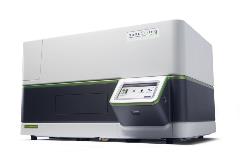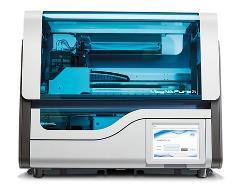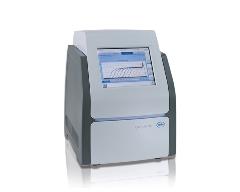ViREMiCS Core Facility
Viral Research and Experimental Medicine Centre @ SingHealth Duke-NUS (ViREMiCS) was established in 2017 with the objective of accelerating the translation of vaccines and therapeutics. This is enabled by the development of molecular tools that can accurately assess safety and efficacy for vaccines and therapeutics, and the use of adaptive experimental and clinical trial design that enables biological effects to be tested in parallel, instead of sequentially.
Since April 2019, ViREMiCS has attained ISO 15189 (Medical Testing) accreditation. It is the first academic research facility in Singapore to provide ISO-accredited molecular tools to test new drugs and vaccines for patients. These tools and processes have been used to support studies by both industry-led and investigator-initiated clinical trials and experimental medicine studies in healthy volunteers.
Accreditation
Quality by Design
- ISO 15189-compliant SOPs and validated assays
- Develop custom study protocol and results reporting to meet specific project requirements
Quality Infrastructure
- ISO 15189-compliant laboratory
- Sample management system to track sample receipt, storage, processing and disposal
- Key equipment are subject to routine calibration and preventative maintenance schedules
Quality Assurance
- Corrective action/preventative action (CAPA) system deployed to identify problems and their root cause, and to ensure continuous improvement
- Participation in external quality assurance programmes for accredited tests
- Regular internal/external audits and management reviews
Service
- Objective tools to assess outcomes of early phase clinical trials
- Guide down-selection of candidates to avoid unnecessary spending and late-stage failure
- Bench to bedside translation of infectious disease therapeutics and vaccines in a timely and affordable manner.
ViREMiCS Service Terms and Conditions
ViREMiCS Service Request Form
ViREMiCS Service Price List
Equipment

NanoString nCounter SPRINT Profiler
Featuring NanoString’s molecular barcoding technology, interrogate host response using off-the-shelf nCounter gene expression panels that allows multiplexing up to 800 targets. NanoString assays eliminate cDNA synthesis, amplification, and library prep which reduces technical variation. Data analysis can be easily performed with the freely available nSolverTM Analysis software, which can be installed on any computer.
Applications include molecular profiling of host response following vaccination or therapeutic intervention, offering valuable insights on molecular correlates for safety and efficacy. As an early adopter of the NanoString nCounter platform, we have developed optimized workflows to maximize data accuracy and shorten turnaround time to results.

Roche MagNA Pure 24 System
The MagNA Pure 24 System offers true walkaway automation. On-board barcode scanning ensures full traceability and tracking for reagents and samples. The universal MagNA Pure 24 Total Nucleic Acid Kit enables efficient extraction of nucleic acid from 10 pre-validated human sample types, with volume inputs ranging from 200 µL to 4 mL.
Assay validation has been performed with the Roche RNA Process Control kit, which consists of a positive internal control that monitors the RNA extraction process. Our optimized protocols enable users to rule out false negative results and allow unambiguous RT-qPCR result interpretation.

Roche LightCycler® 96 Instrument
The LightCycler® 96 Instrument is a real-time PCR system for rapid cycling up to 96 samples. The LightCycler® 96 Instrument features thermal homogeneity and precise cycling speed to produce accurate and reproducible results. Its optical detection system flexibly detects sequence-dependent probes, such as hydrolysis probes and sequence-independent dyes (i.e., SYBR Green). Multiplex and multicolour capabilities permit the use of up to four different fluorescent dyes.
The laboratory has developed ISO-validated workflows for qualitative detection of dengue virus (serotypes 1 to 4), Zika virus and the yellow fever 17D virus, and participates in external quality assurance programmes offered by QCMD for these assays.
Contact Information
Dr Eugenia Ong, Senior Research Fellow, ViREMiCS
Phone: (+65) 6576 7090 Email: eugenia.ong@duke-nus.edu.sg
Location:
Level 6, 20 College Rd, Academia, Singapore 169856
Publication
- Ong EZ, Chan YFZ, Leong WY, Lee MYN, Kalimuddin S, et al. A dynamic immune response shapes COVID-19 disease progression. Cell Host Microbe. 2020;27(6), 879-882.e872.
- Chan KR, Gan ES, Chan CYY, Liang C, Low JZH, Zhang SL, et al. Metabolic perturbations and cellular stress underpin susceptibility to symptomatic live-attenuated yellow fever infection. Nat Med. 2019;25(8):1218-24.
- Ong EZ, Gan ES, de Alwis R, Wijaya L, Ong XM, Zhang M, et al. Genomic signature of early T-cell response is associated with lower antibody titer threshold for sterilizing immunity. Antiviral Res. 2019;166:35-41.
- Kwek SS, Watanabe S, Chan KR, Ong EZ, Tan HC, Ng WC, et al. A systematic approach to the development of a safe live attenuated Zika vaccine. Nat Commun. 2018;9(1):1031.
- Tharakaraman K, Watanabe S, Chan KR, Huan J, Subramanian V, Chionh YH, et al. Rational Engineering and Characterization of an mAb that Neutralizes Zika Virus by Targeting a Mutationally Constrained Quaternary Epitope. Cell Host Microbe. 2018;23(5):618-27.e6.
- Chan CY, Chan KR, Chua CJ, Nur Hazirah S, Ghosh S, Ooi EE, et al. Early molecular correlates of adverse events following yellow fever vaccination. JCI Insight. 2017;2(19).
- Chan KR, Wang X, Saron WAA, Gan ES, Tan HC, Mok DZL, et al. Cross-reactive antibodies enhance live attenuated virus infection for increased immunogenicity. Nat Microbiol. 2016;1:16164.
- Low JG, Sung C, Wijaya L, Wei Y, Rathore APS, Watanabe S, et al. Efficacy and safety of celgosivir in patients with dengue fever (CELADEN): a phase 1b, randomised, double-blind, placebo-controlled, proof-of-concept trial. Lancet Infect Dis. 2014;14(8):706-15.